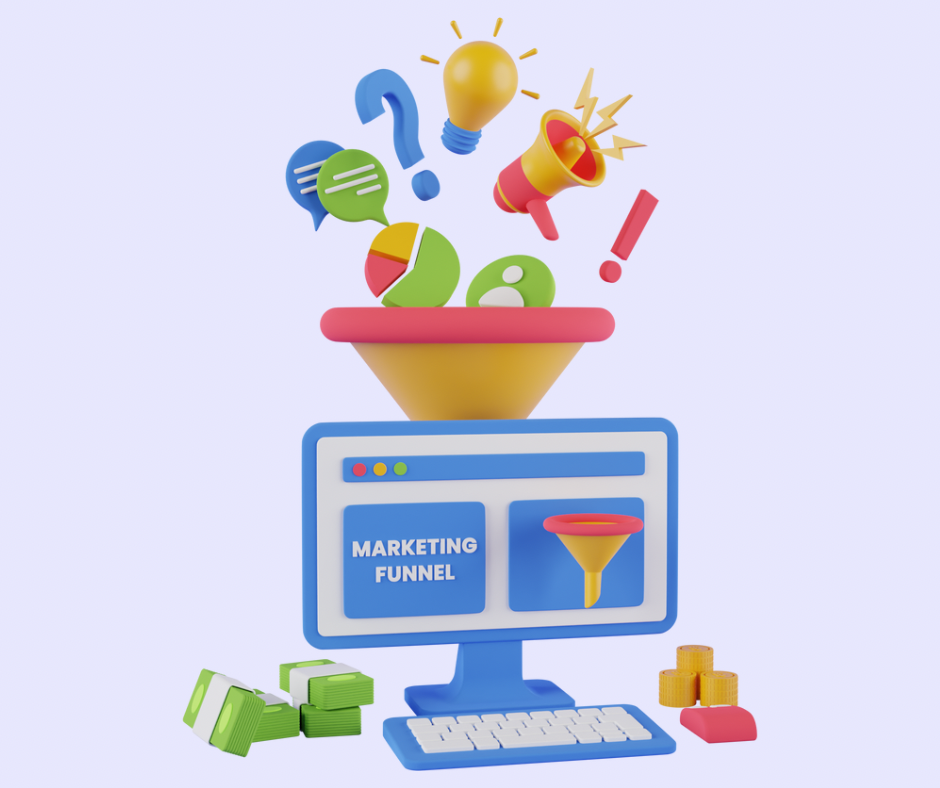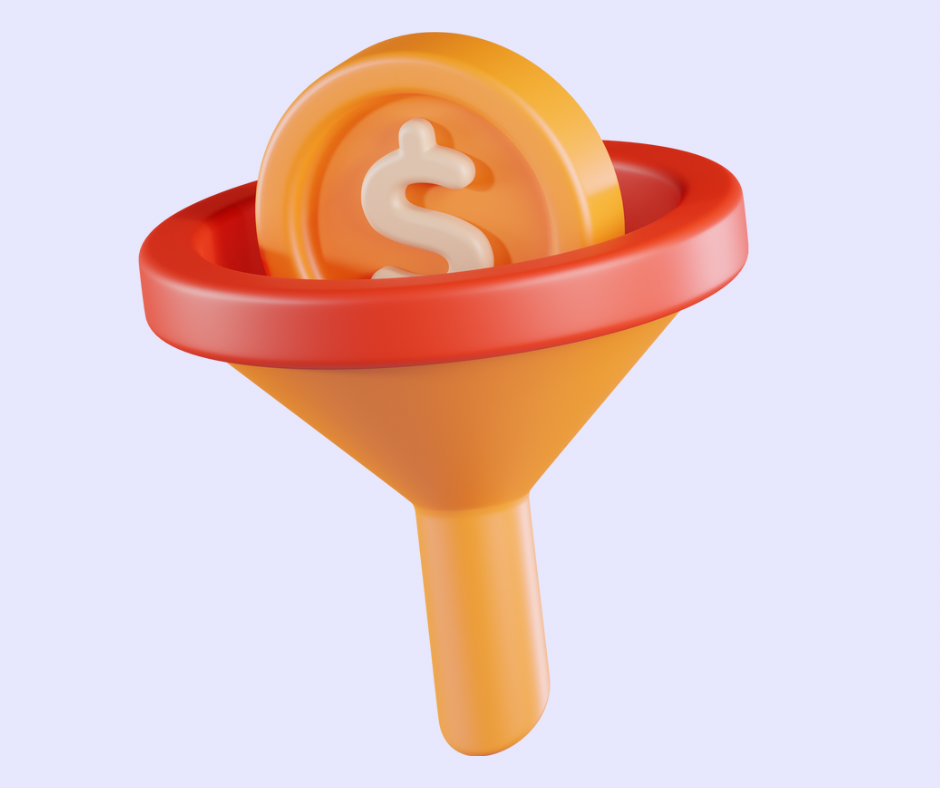Mastering the marketing funnel: A guide for small business owners
Understanding your marketing funnel is critical to small business success. The marketing funnel is the process that guides potential customers from awareness to conversion. In this blog post, we'll explore the four stages of the marketing funnel and discuss tactics to improve results at each stage. By the end of this post, you'll have a solid understanding of how to build an effective marketing funnel that drives business growth. Whether you're just starting out or looking to refine your existing strategy, read on to learn more.
Ready to get to work on your small businesses’ marketing funnel?
What is a marketing funnel?
The four stages of a marketing funnel
Top-of-funnel tactics for increasing awareness
Middle-of-funnel tactics for building interest
Bottom-of-funnel tactics for encouraging action
Creating a seamless customer journey
Measuring the success of your marketing funnel
Common mistakes to avoid in your marketing funnel
Optimizing your marketing funnel for better results
The importance of continuous improvement in your marketing funnel
What is a marketing funnel?
A marketing funnel is a framework that helps businesses understand the customer journey from awareness to purchase. The funnel is a visual representation of the different stages that a potential customer goes through before making a purchase.
At the top of the funnel, potential customers become aware of your business and your products or services. In the middle of the funnel, they become more interested in what you have to offer and start considering whether they might be a good fit. At the bottom of the funnel, they make a purchase decision and take action by becoming paying customers.
By understanding the stages of the funnel and the tactics that work best at each stage, businesses can create a more effective marketing strategy and improve their conversion rates.
The four stages of a marketing funnel
The marketing funnel is a model that represents the different stages that a potential customer goes through on their journey towards making a purchase. There are four stages of a marketing funnel, which are:
Awareness: This is the stage where potential customers become aware of your brand and your products or services. At this stage, your goal is to create brand awareness and capture the attention of your target audience.
Interest: In this stage, potential customers start to show interest in what you have to offer. They might visit your website or social media profiles, download a free resource, or sign up for a newsletter. Your goal is to provide them with valuable information and content that helps them move towards a purchase decision.
Decision: At this stage, potential customers are considering whether to make a purchase from you or a competitor. Your goal is to provide them with information that helps them make an informed decision and to create a sense of urgency that encourages them to take action.
Action: This is the stage where potential customers become paying customers. Your goal is to make the buying process as smooth and easy as possible and to provide a great customer experience that encourages repeat business and referrals. By understanding the four stages of the marketing funnel, businesses can create a more effective marketing strategy and improve their conversion rates.
Top-of-funnel tactics for increasing awareness
Top-of-funnel (TOFU) tactics are marketing strategies that are designed to increase brand awareness and capture the attention of potential customers who may not have heard of your business before. TOFU tactics typically involve broad audience targeting and focus on creating a positive first impression with your target audience. Some effective top-of-funnel tactics for increasing awareness include:
Content marketing: Creating and sharing valuable, informative content like blog posts, videos, and social media posts can help you attract potential customers and build brand awareness.
Social media advertising: Platforms like Facebook and Instagram offer robust targeting options that can help you reach new potential customers who are interested in your products or services.
Influencer marketing: Partnering with social media influencers or industry thought leaders can help you reach new audiences and build credibility.
Search engine optimization (SEO): Optimizing your website for search engines can help you appear higher in search results, making it easier for potential customers to find you.
By using top-of-funnel tactics to increase brand awareness, businesses can build a strong foundation for their marketing funnel and attract more potential customers to their business.
Middle-of-funnel tactics for building interest
Middle-of-funnel (MOFU) tactics are marketing strategies that focus on building interest and engagement with potential customers who are already aware of your brand. At this stage, potential customers are actively considering your products or services and are looking for more information to help them make a decision. Some effective middle-of-funnel tactics for building interest include:
Lead magnets: Offering valuable resources like e-books, webinars, or whitepapers can help you capture contact information from potential customers and provide them with helpful information that builds interest in your products or services.
Email marketing: Using targeted email campaigns to share more information about your products or services and to nurture leads can help build interest and engagement with potential customers.
Remarketing: Retargeting ads to users who have visited your website or interacted with your brand can help keep your business top-of-mind and remind potential customers of their interest in your products or services.
By using middle-of-funnel tactics to build interest and engagement with potential customers, businesses can move leads further down the marketing funnel and increase the likelihood of conversion.
Bottom-of-funnel tactics for encouraging action
Bottom-of-funnel (BOFU) tactics are marketing strategies that focus on encouraging potential customers to take action and make a purchase or conversion. At this stage, potential customers have already expressed interest in your products or services and are close to making a decision. Some effective bottom-of-funnel tactics for encouraging action include:
Offer promotions: Offering special deals or discounts can be a powerful incentive for potential customers to make a purchase.
Use customer testimonials: Sharing positive reviews and customer testimonials can help build trust and encourage potential customers to take action.
Create urgency: Creating a sense of urgency with limited-time offers or limited product availability can help encourage potential customers to take action before it's too late.
Provide excellent customer service: Providing exceptional customer service and support can help build trust and confidence in your business, making it more likely that potential customers will convert.
By using bottom-of-funnel tactics to encourage action, businesses can increase the likelihood of conversion and turn potential customers into loyal customers.
Creating a seamless customer journey
Creating a seamless customer journey is critical to the success of any business. A customer journey is the path that a customer takes from initial awareness of your brand to the final purchase or conversion. To create a seamless customer journey, businesses must consider the entire customer experience and ensure that each touchpoint along the way is smooth, intuitive, and engaging.
This includes optimizing the user experience on your website and landing pages, providing helpful and relevant content at each stage of the marketing funnel, and ensuring that the customer support experience is exceptional. It also means considering the needs and preferences of your target audience and tailoring your messaging and marketing strategies accordingly.
By creating a seamless customer journey, businesses can improve customer satisfaction, increase brand loyalty, and ultimately drive more sales and revenue. It's an ongoing process that requires constant attention and optimization, but the rewards can be significant.
Measuring the success of your marketing funnel
Measuring the success of your marketing funnel is crucial for determining the effectiveness of your marketing strategies and identifying areas for improvement. Key metrics to measure the success of your marketing funnel include:
Conversion rates: Tracking the percentage of potential customers who make a purchase or conversion at each stage of the funnel can help you identify where potential drop-offs are occurring and optimize your strategies accordingly.
Customer acquisition cost (CAC): Understanding how much it costs to acquire a new customer can help you determine the ROI of your marketing efforts and make informed decisions about budget allocation.
Lifetime customer value (LCV): Measuring the total revenue generated by a customer over their lifetime can help you better understand the value of each customer and inform decisions about marketing and customer retention strategies.
Funnel velocity: Tracking the amount of time it takes a potential customer to move through the funnel can help you identify bottlenecks and optimize your strategies to improve the overall customer experience.
By regularly monitoring and analyzing these metrics, you can make data-driven decisions and continually improve your marketing funnel to drive growth and success.
Common mistakes to avoid in your marketing funnel
Creating an effective marketing funnel is a complex and iterative process that requires careful planning, execution, and optimization. While there is no one-size-fits-all approach to building a successful marketing funnel, there are several common mistakes that businesses should avoid:
Focusing too heavily on top-of-funnel tactics and neglecting middle and bottom-of-funnel strategies.
Failing to clearly define your target audience and develop tailored messaging and content to engage them at each stage of the funnel.
Failing to optimize your website and landing pages for conversion.
Overcomplicating the customer journey with too many steps or confusing messaging.
Neglecting to track and measure key metrics to continually optimize and improve the funnel.
By avoiding these common mistakes and regularly testing and optimizing your marketing funnel, businesses can improve customer engagement, increase conversions, and drive growth and success.
Optimizing your marketing funnel for better results
Optimizing your marketing funnel is an ongoing process that involves testing and refining your strategies to improve results. Here are a few tips for optimizing your marketing funnel:
Analyze your data: Use analytics tools to track and measure key metrics, such as conversion rates, bounce rates, and engagement, to identify areas of improvement.
Refine your messaging: Continually test and refine your messaging and content to ensure it resonates with your target audience at each stage of the funnel.
Optimize your website: Ensure your website and landing pages are optimized for conversion by reducing load times, improving design, and simplifying the customer journey.
Use automation: Implement marketing automation tools to streamline the customer journey and ensure timely and relevant communication at each stage of the funnel.
Personalize the experience: Use customer data to personalize the customer experience and tailor your messaging and content to their specific needs and interests.
By implementing these strategies and continually testing and refining your approach, you can optimize your marketing funnel for better results and drive growth and success for your business.
The importance of continuous improvement in your marketing funnel
Continuous improvement is essential for achieving long-term success with your marketing funnel. The marketplace is constantly evolving, and consumer preferences and behaviors are continually changing, making it critical to adapt and improve your strategies regularly. By continuously analyzing data and measuring results, you can identify areas of weakness in your marketing funnel and take steps to improve them.
Improving your marketing funnel helps you stay competitive, drive growth, and increase ROI. By continually testing and refining your approach, you can optimize your funnel for better results, generate more leads, and increase conversions. Additionally, continuous improvement helps you stay in tune with your customers' needs and preferences, allowing you to tailor your messaging and content to better resonate with them.
Ultimately, continuous improvement helps you stay agile, responsive, and effective in a rapidly changing marketplace, setting your business up for long-term success.
Related Articles
Ready to start managing your marketing? Get Started With Fickl Today.




